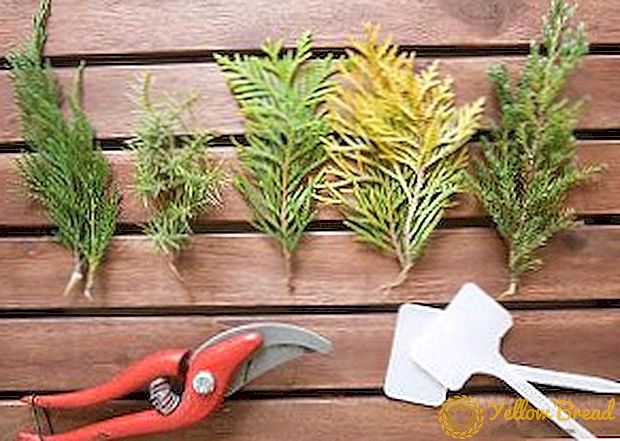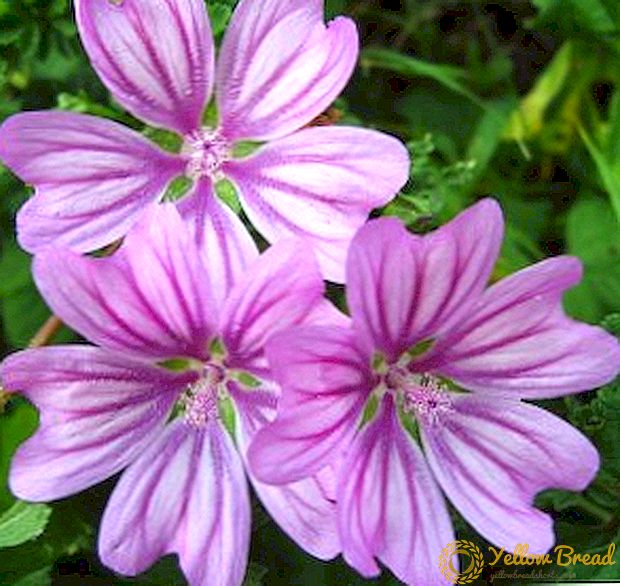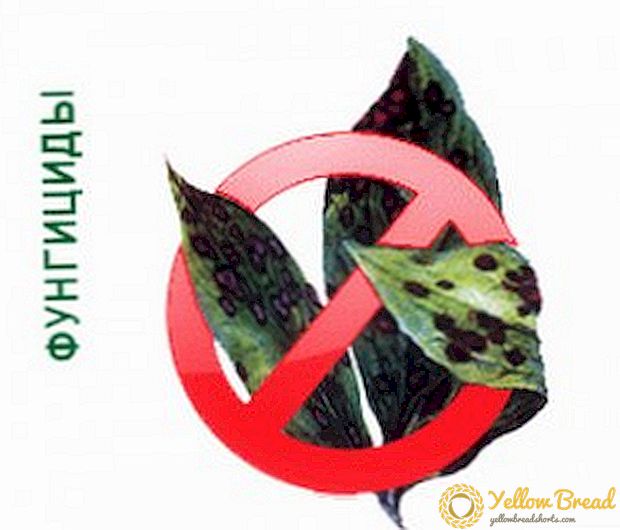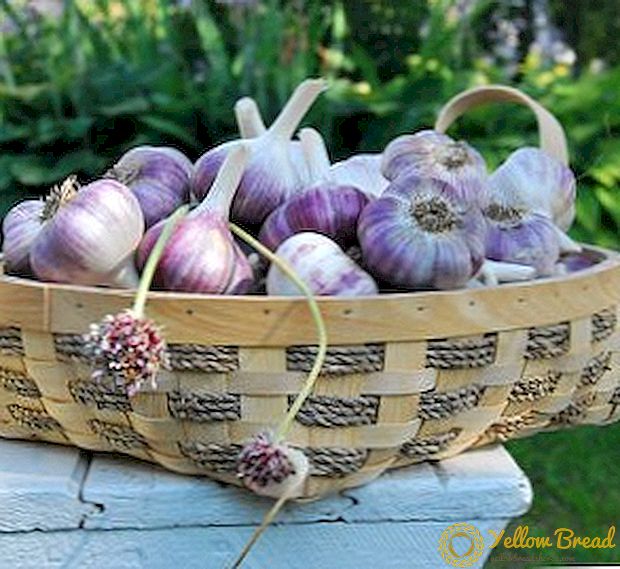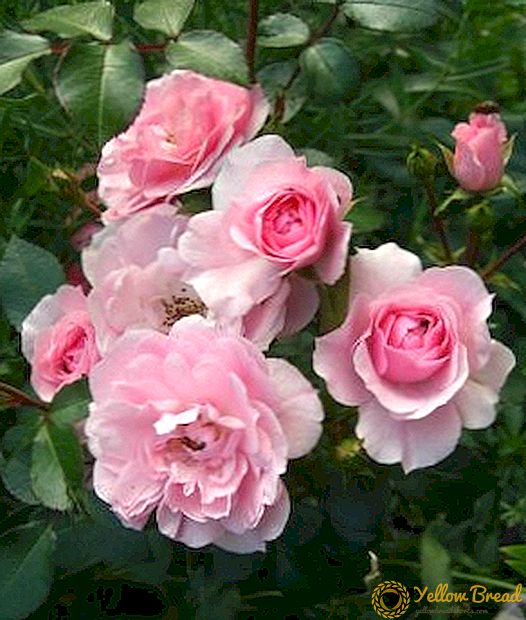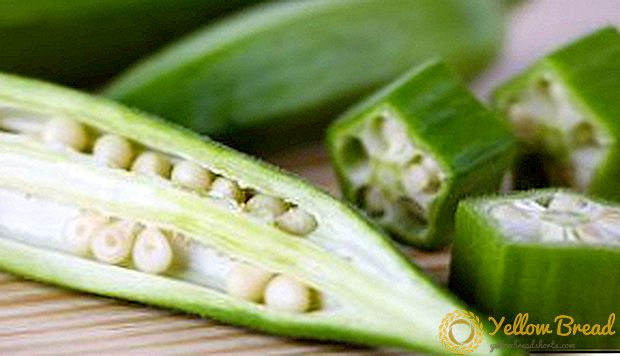 Among gardeners and gardeners, they perceive okra as something exotic, but recently gaining increasing popularity. For the most part, this was influenced by the delicious taste of the vegetable and the possibility of its use in dietary nutrition.
Among gardeners and gardeners, they perceive okra as something exotic, but recently gaining increasing popularity. For the most part, this was influenced by the delicious taste of the vegetable and the possibility of its use in dietary nutrition.
Okra appeared in Africa, and in the southern countries, where its cultivation began hundreds of years ago, it is known by other names - vegetable hibiscus, bhindi, okra, gombo.
- What is okra: biological features of culture
- Growing okra from seed through seedlings
- Time to plant seeds for seedlings
- Seed treatment before planting
- Capacity for growing seedlings
- Soil for seedlings
- Seed Depth
- Conditions for sprouting and caring for crops
- Seedling care
- Planting okra seedlings on a permanent place
- Time for planting seedlings
- The choice of location and good predecessors
- Planting plantation seedlings
- Care and cultivation of exotic vegetables
- Watering, weeding and loosening between the rows
- Fertilizing
- Fight against diseases and pests
- Harvest
What is okra: biological features of culture
Okra is an annual plant of the family Malvaceae.In the near "relationship" is cotton and garden mallow. Like many members of this family, okra is a tall plant.
Dwarf varieties do not grow more than 40 cm in height, and grow them mainly for decorative purposes. To get the crop planted tall forms of plants that grow up to two meters.
Okra as a vegetable is used in the diet. In the food are young fruits. These are long green pods from 5 to 25 cm in size, similar to green pepper. Fruits grow very quickly, and if they are not harvested at the age of 3-5 days, then they grow coarse, lose their color, taste and useful qualities.
 Fruits are allowed to ripen, mainly for collecting seeds for planting. They are also used in medicine and cosmetology to obtain the essential oil and coffee substitute. Immature seeds can be eaten instead of green peas.
Fruits are allowed to ripen, mainly for collecting seeds for planting. They are also used in medicine and cosmetology to obtain the essential oil and coffee substitute. Immature seeds can be eaten instead of green peas.
Okra moderately moisture-loving, but does not tolerate waterlogging and soil salinization. The plant quietly tolerates short-term dry periods, but at the same time the quantity and quality of the crop is reduced.
Okra is a heat-loving culture, in this aspect it is very close to eggplant. Seed germination occurs at a temperature not lower than 16 ° C, and the optimum conditions for the active growth and development of the plant are 24-25 ° C.If the temperature falls below 16 ° C, the development of okra is delayed. Frosts affect culture in a destructive way.
It is light-requiring and responds well to watering and feed. If a cold summer is issued, then without covering with a film you cannot achieve a good harvest.
Okra grows on most soils. Does not tolerate acidic and poorly drained soils, in preference light and rich in organic matter. Most varieties bloom with a short light day.
The start of flowering can occur even at the earliest growth stage, even when daylight hours last less than 11 hours. With a long bottom, flowers tend to abort. The growing season lasts 3-4 months.
 Okra is so useful and nutritious that this plant is called a "vegetarian dream." Its fruits have a high content of iron, calcium and potassium, protein, vitamins C, B6, K, A, dietary fiber, and with all this only 31 kcal.
Okra is so useful and nutritious that this plant is called a "vegetarian dream." Its fruits have a high content of iron, calcium and potassium, protein, vitamins C, B6, K, A, dietary fiber, and with all this only 31 kcal.
The beneficial properties of okra are beyond the scope of a culinary product only. It is especially recommended to eat this vegetable in the position, as it contains a large amount of folic acid. It has a positive effect on the formation of the neural tube of the embryo in early pregnancy.
 Okra is a natural regulator of blood sugar levels. Her plant mucus and dietary fiber are absorbed in the small intestine. Especially recommended to use dishes with okra for people with problems of the gastrointestinal tract.
Okra is a natural regulator of blood sugar levels. Her plant mucus and dietary fiber are absorbed in the small intestine. Especially recommended to use dishes with okra for people with problems of the gastrointestinal tract.
Recently, many nutritionists have been delighted with the fact that such a plant as okra is just an ideal product for weight loss, which is not harmful to health.
This is a great helper in the fight against depression, chronic fatigue and even bronchial asthma. Perfect for the diet of patients suffering from atherosclerosis, and strengthens the walls of small vessels.
Okra removes excess cholesterol and toxins from the body. It has an auxiliary effect on the treatment of gastric ulcers. Scientists are conducting further research to know what else okra can be useful for.
It was found that it can prevent the occurrence of colorectal cancer and the appearance of cataracts. Vegetable also serves as a good doctor of male sexual weakness.
Growing okra from seed through seedlings
 If you became interested in okra, then the cultivation of this exotic plant from seeds is not particularly difficult, only it has some nuances.
If you became interested in okra, then the cultivation of this exotic plant from seeds is not particularly difficult, only it has some nuances.
Time to plant seeds for seedlings
To determine the exact timing of planting okra is quite difficult. It is usually carried out in early summer, when the ground is already well warmed, but in the middle lane the offensive of this stage is very blurry.
Experienced gardeners plant okra seedlings in early summer. At this time, the soil should already be well warmed up. Planting okra seedlings carried out in the month of April.
Seed treatment before planting
It is characterized by slow germination of seeds - about three weeks. To stimulate the growth process just before sowing you need to soak them for a day in warm water.
Capacity for growing seedlings
For planting okra from seeds for seedlings, peat pots or disposable cups are wonderfully suitable as a more budget option. Such capacity is taken because of the long root of the okra.
 This will protect you in the future when transplanting seedlings into open ground. For each plant, you must select an individual pot. The potted seedlings have a poor survival rate, since during transplantation there is a strong damage to the stem root, and this leads to a halt in the growth of okra.
This will protect you in the future when transplanting seedlings into open ground. For each plant, you must select an individual pot. The potted seedlings have a poor survival rate, since during transplantation there is a strong damage to the stem root, and this leads to a halt in the growth of okra.
Soil for seedlings
Soil mixture for okra seeds is needed light and fertile. It needs to be mixed with mineral fertilizers and humus.
Seed Depth
Sow seeds to a depth of 3-4 cm.
Conditions for sprouting and caring for crops
After the okra seeds have been planted, they should be watered gently so that the top layer of the earth does not form a crust, and that the plant does not die due to an excess of moisture. After 15-20 days, the first shoots of okra will appear.
In order for them to ascend during this period, it is necessary to keep them at a temperature of 15 ° C. If the temperature is lower, the seeds will germinate more slowly and will be weak. This is the most crucial stage in which okra especially requires proper care.
Seedling care
When the seeds have risen, the seedlings should be fed phosphate fertilizer. You can give nitrophoska at a concentration of 1 tablespoon per 5 liters of water. While okra continues to grow, it needs to be periodically fed.
Planting okra seedlings on a permanent place
After the seedlings are fully strengthened, it can be transplanted into open ground.
Time for planting seedlings
 Since okra is a thermophilic plant, planting seedlings in open ground should be carried out only when it is fully heated, and especially when the risk of spring frosts is excluded.
Since okra is a thermophilic plant, planting seedlings in open ground should be carried out only when it is fully heated, and especially when the risk of spring frosts is excluded.
The choice of location and good predecessors
Okra, or, as it is also called among our people, "ladies fingers" is a very light-loving plant, therefore, it is necessary to plant seedlings only in a warm place.
The soil for planting should be very fertile and rich in mineral fertilizers. The ideal soil for okra is permeable to moisture and enriched with humus. Best of all, it grows in beds where previously cucumbers, radishes and potatoes were planted.
Planting plantation seedlings
Remember that okra does not like constraints, so you need to plant it as little as possible among themselves. The distance between seedlings should be more than 30 cm, and between rows within 50 cm.
Care and cultivation of exotic vegetables
How to grow okra in the open field providing it proper and proper care, we will tell further.
Watering, weeding and loosening between the rows
Okre need moderate watering. Overmoistened or, on the contrary, too dry soil adversely affects the growth and development of young plants. Okra has a rather long root, so the soil should be well hydrated at a depth of up to 40 cm.
 Despite the drought resistance, on hot summer days it needs to be watered even more often and more abundantly. But remember that an overabundance of moisture in the ground is also unacceptable.
Despite the drought resistance, on hot summer days it needs to be watered even more often and more abundantly. But remember that an overabundance of moisture in the ground is also unacceptable.
In order for the plant to branch more actively, and the lateral shoots grow more actively, you need to pin the apical cutting of the main stem when they reach a height of 40 cm.When the okra grows high enough, you will need to build a support for it. As they grow for okra erect support.
Fertilizing
 Feeding "ladies fingers" should be combined mineral fertilizers. The proportion is as follows: 2 tablespoons per 10 liters of water. In the fertile period, potassium nitrate is introduced in the same doses.
Feeding "ladies fingers" should be combined mineral fertilizers. The proportion is as follows: 2 tablespoons per 10 liters of water. In the fertile period, potassium nitrate is introduced in the same doses.
Fight against diseases and pests
Mealy dew a rich white bloom covers the leaves of okra on both sides, gradually moving to other parts of the plant. This disease reduces the ability to photosynthesis, as a result of which the leaves dry up, the fruiting is interrupted, and as a result, if not treated, it dies. The pathogen survives the winter on the remains of the plant.
Control measures: Plant residues should be removed in a timely manner and placed in special compost, as well as proper crop alternation should be observed. The next step is to disinfect the inventory, and if the okra was growing in the greenhouse, then carry out the procedure in it. At the end of the vegetative period, the greenhouse needs to be fumigated with sulfur blocks for a day at the rate of 30 g / m3.Doors and vents must be tightly closed and sealed.
In preventive measures, before sowing, the seeds of an okra must be soaked in a solution of Fitosporin M (1.5-2 g per 1 l of water). It is possible during the growing season to carry out spraying with Kumulos, Tiovit Jet (2-3 g / l of water), gray colloid (4 g / l), and the last spraying the day before harvesting with Topaz (2 ml / l of water) or "Integral" (5 ml / l).
 If the disease has progressed greatly, then the procedure should be repeated at intervals of seven days, but not more than five times. The last spraying in this case is done three days before harvest. Try to remove all the weeds that grow next to okra, as they are the first to become infected with powdery mildew and carry the disease to fruit crops.
If the disease has progressed greatly, then the procedure should be repeated at intervals of seven days, but not more than five times. The last spraying in this case is done three days before harvest. Try to remove all the weeds that grow next to okra, as they are the first to become infected with powdery mildew and carry the disease to fruit crops.
Brown spot affects okra, growing in greenhouse conditions, if it is too wet. The upper part of the leaves is covered with yellow spots, and the lower - light fungal bloom, which eventually turns brown. In a strongly affected and neglected plant, the leaves eventually dry out. The pathogen also overwinters on the remnants of okra.
Control measures: Do not allow long-term growth of okra in one place, try to alternate it with suitable predecessors. Carry out decontamination of greenhouses with sulfur dioxide in the autumn. Maintain air humidity in the greenhouse within 75% by systematically airing.
When you notice the initial signs of brown spot, sprinkle cinnamon decoction (200 g per 1 liter of water) or garlic cloves infusion (15 g per 1 l). To ensure that the solutions stay as long as possible on the leaves of the plants and do not run off, add soap to them.
Thrips - tiny insects that survive the winter in the remains of plants in the ground. The leaves of okra from their pricks become covered with yellowish spots, then turn brown and dry.
Control measures:
 Remove plant residues at the end of autumn and disinfect greenhouses thoroughly. If thrips have appeared, use infusions and decoctions of insecticidal plants: white mustard seeds - 10 g / l, bitter pepper - 50 g / l, yarrow - 80 g / l, citrus peel - 100 g / l, 500 g / l sweet-bitten l To keep the solution on the plants longer, add soap to the water at the rate of 40 g / 10 l.
Remove plant residues at the end of autumn and disinfect greenhouses thoroughly. If thrips have appeared, use infusions and decoctions of insecticidal plants: white mustard seeds - 10 g / l, bitter pepper - 50 g / l, yarrow - 80 g / l, citrus peel - 100 g / l, 500 g / l sweet-bitten l To keep the solution on the plants longer, add soap to the water at the rate of 40 g / 10 l.
During the growing season, you can spray the drugs: "Spark-bio" (10 ml / l) and "Inta C-M" with an interval of 15 days. The last treatment should be carried out 3 days before harvest.
Cabbage scoop - a moth with a wingspan of up to 5 cm. It has a different color: from green to brown-brown. Caterpillars are large, green with a wide yellow stripe on the sides. They appear in May and are very hungry. They gnaw all the leaves, leaving only the veins.
Control measures:
Plant residues should be removed in a timely manner and put into special compost with microbiological preparations. You can sow nearby nectar-bearing plants that will attract enemies cabbage shovels.
As a preventive measure, in the autumn you need to dig deep the earth and do not forget about the agricultural technology of cultivation. If the tracks are few, they can be assembled by hand and destroyed. If there are a lot of them, then one should resort to “Bitoxibacillin” or “Lepidocide” at the rate of 50 g per 10 l of water.
 Slugs destroy young okra, especially in periods of high humidity. They eat away leaves and ovaries of okra, leaving silvery traces.In addition, slugs are also carriers of brown spot and downy mildew. Control measures: Regularly clean between rows and cultivate the land, creating a lumpy structure. Sprinkle with row of ash, superphosphate or lime.
Slugs destroy young okra, especially in periods of high humidity. They eat away leaves and ovaries of okra, leaving silvery traces.In addition, slugs are also carriers of brown spot and downy mildew. Control measures: Regularly clean between rows and cultivate the land, creating a lumpy structure. Sprinkle with row of ash, superphosphate or lime.
Place baits where okra grows, with fermenting foods such as beer. There and will crawl slugs. Spray okra with 10% solution of ammonia and scatter the preparation "Meta" at the rate of 30-40 g / m2.
Harvest
 Some varieties of okra can bear fruit within a few months after planting. They are harvested immature when their length does not exceed 9 cm.
Some varieties of okra can bear fruit within a few months after planting. They are harvested immature when their length does not exceed 9 cm.
Usually large pods are coarse and fibrous, but with proper farming techniques and comfortable growing conditions they can also be tender and tasty. You can check the "ladies fingers" for usability by nipping off the end of the pod. In over-ripe fruits, this will not work.
 Okra can bear fruit until the onset of cold weather. To obtain seeds a few pods, leave until fully ripe. Do not keep long plucked fruit. It is advisable to prepare them immediately.
Okra can bear fruit until the onset of cold weather. To obtain seeds a few pods, leave until fully ripe. Do not keep long plucked fruit. It is advisable to prepare them immediately.
Over time, they lose their taste, becoming coarse and fibrous. In the refrigerator, okra can be kept for up to 6 days, and in the freezer for several months.

